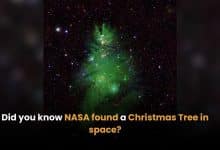Thai astronomers unearth 13 ancient galaxies, smaller than a speck in the universe

Thai astronomers have unravelled the mysteries of the universe by uncovering 13 low-mass galaxies, each a celestial relic from the dawn of time. The James Webb Space Telescope, their cosmic peephole, allowed them to peer into the very fabric of the early universe.
The National Astronomical Research Institute of Thailand (NARIT) harnessed the power of the James Webb Space Telescope, capturing images that unveiled these minuscule galaxies, each boasting a mass 10 to 100 times less than our own Milky Way. NARIT proudly announced this stellar discovery yesterday, February 1, showcasing its findings in the Astrophysical Journal Letters.
These cosmic wonders, originating around 13 billion years ago, provide a rare glimpse into the Epoch of Reionization, an era when the universe was a mere 550 to 700 million years old. Here, the remnants of the Big Bang coalesced into stars and galaxies, birthing these tiny celestial bodies that defy our cosmic understanding.
The James Webb Space Telescope, orbiting the Sun 1.5 million kilometres away from Earth, navigated the challenges of capturing these elusive low-mass galaxies, pushing the boundaries of its imaging capabilities.
Astounding insights emerged as astronomers delved into the newly discovered galaxies. They revealed a fascinating dance of stellar creation, with these ancient entities birthing new stars at a rate of 1 to 10 per year. The age of these stellar inhabitants ranged from 30 to 200 million years, aligning seamlessly with the predictions of astrophysical theorists, reported The Nation.
The research team, armed with this celestial treasure trove, formulated a simple yet profound equation. By leveraging the ages of the stars, they devised a reliable method to estimate the ongoing rate of star formation and the overall mass of these pint-sized galaxies.
In related news, Dr Saran Posayajinda, Director of the National Astronomical Research Institute (NARIT), revealed that this year Thailand will build a world-class astronomical infrastructure, the NARIT Cube-1 satellite.
A new radio telescope for research in radio astronomy, the Vigos model, with a diameter of 13 metres, in Chiang Mai and Songkhla provinces, will connect to networks with other countries. The launch of a stargazing mobile application created by Thai people named NAPA from planetarium software is being prepared.
Latest Thailand News
Follow The Thaiger on Google News:


























